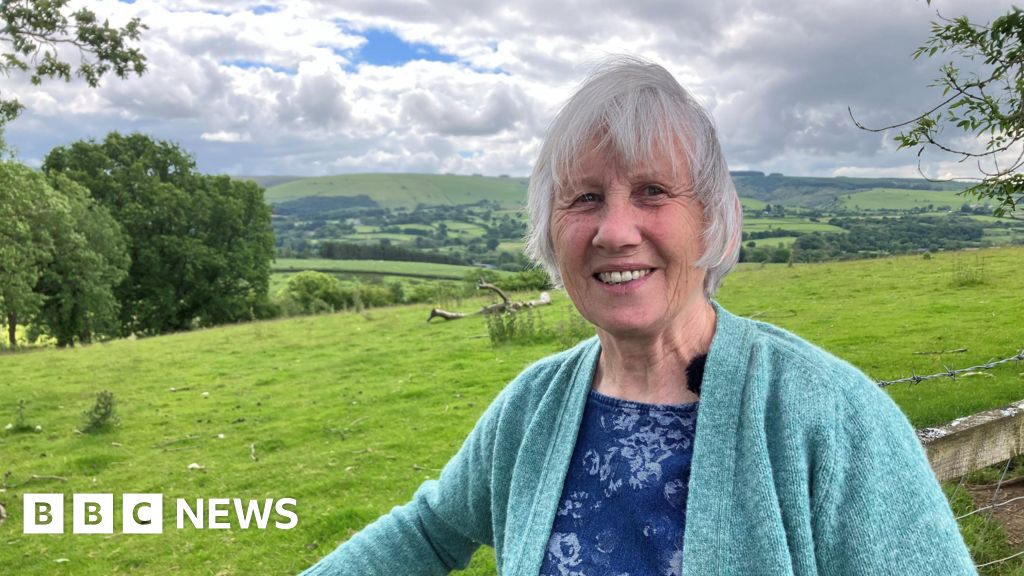Although it is the local council and Welsh government who grant planning permission, the reason the power lines have to run such a long way is that there are a limited number of points, which are controlled by the UK government, where big power projects can connect into the grid.
And whoever is in charge of the next government has an incredibly difficult task on their hands: keeping energy bills low while millions are still struggling, ensuring energy security and hitting green energy targets.
Projects like this one in Wales are part of that mix.
But some local residents I have been speaking to have said the turbine construction would damage an existing forest, removing ancient trees along the pylon construction route.
“It’s destroying the environment in an attempt to save the environment” is the refrain that I keep hearing.
In recent years, there have been huge advances in the development of offshore wind, and residents here want the focus of the UK and Welsh governments on offshore renewable technology instead.
But Abi Beck of RenewableUK Cymru says onshore wind needs to remain part of the mix.
“Onshore wind is the cheapest, it’s the quickest to build and it’s the most readily deployable technology we have for renewable energy.
“And we desperately need to upscale the amount of renewable energy we produce if we are going to be anywhere near meeting our targets in the next decade,” she says.
The difficulty here is that the place the onshore wind is generated is a very long way from the place it can be plugged into the UK network.
Green GEN Cymru says it is listening to residents’ concerns but that “the existing network in Mid and West Wales does not have nearly enough capacity to connect all the new renewable energy we need for our homes and businesses, locally and nationally”.
Llandovery farmer Dyfan Walters knows that only too well. “We all know the infrastructure needs improving,” he says. “I’m not against renewable energy.”
He and his wife, Carys, have just finished building their family farm on the land Carys grew up on. Now there are plans for two pylons in their fields so they’ve become members of the local Llandovery Pylon Steering Group.
Credit: Source link









